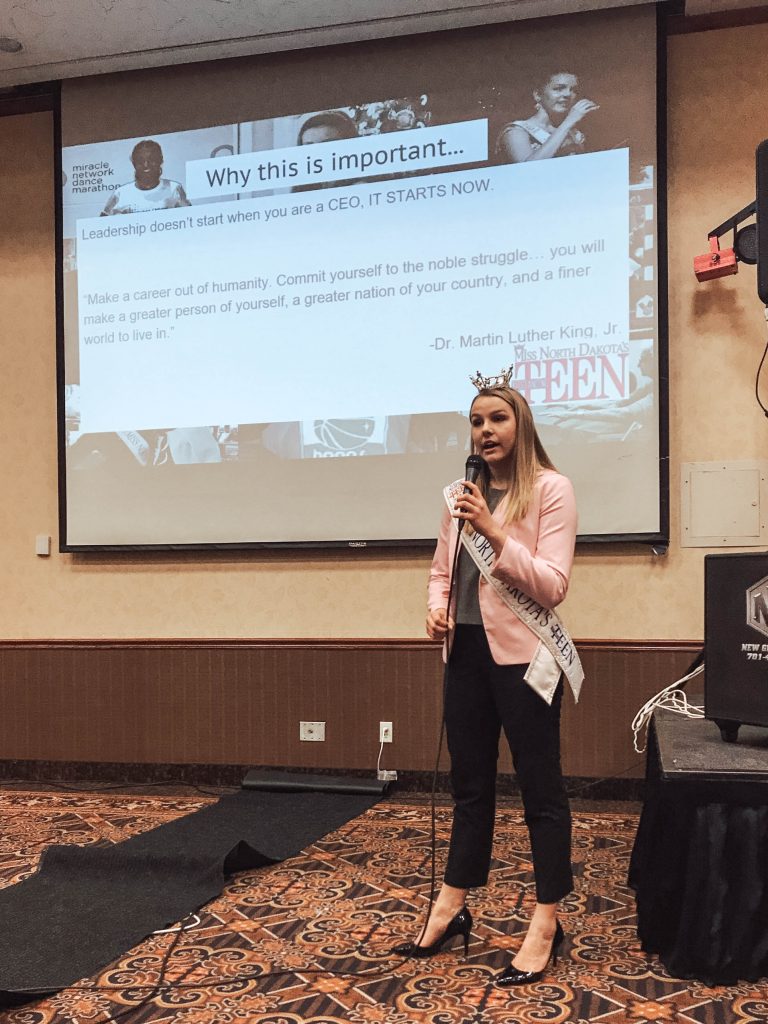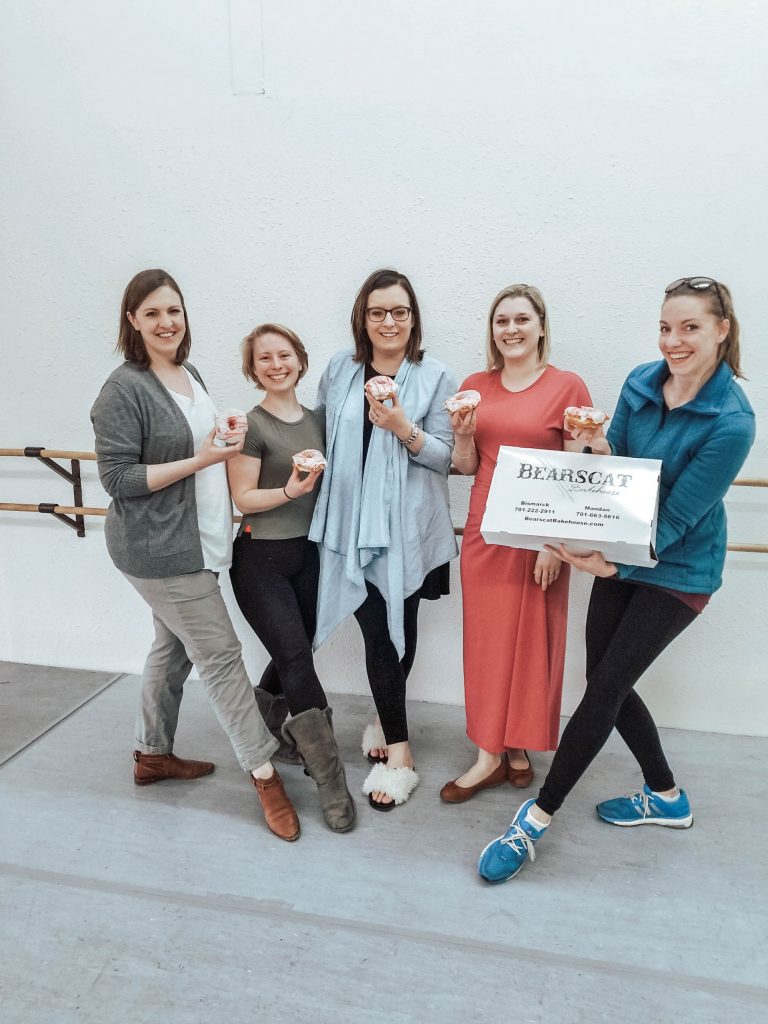Not an Oxymoron — and not Without Help
By Micah Schlittenhardt
Editor’s note: The author of this submitted piece is 16 years old and a sophomore at Legacy High School in Bismarck. Micah holds the title of “Miss North Dakota Outstanding Teen,” and will turn it over to another young woman in June. While her pageant platform has been Dance for Parkinson’s, her experience revealed growth opportunities — and a new platform.
As I recount my year as Miss North Dakota’s Outstanding Teen (MNDOTeen), I realize how impactful servant leadership was on my platform; however, for me personally, this concept was a paradigm shift for what I thought was expected out of a leader. Adopting the servant leader model required me to view the world through a different lens. It challenged me to listen for understanding andtorespect the differences in perspectives, whether it was a Parkinson’s patient or a board member of whatever new organization I was working with. Fortunately, with the help of astounding leaders within our community that were willing to give a teenager a chance, I was able to appreciate firsthand the tangible outcomes of servantleadership. To be a contender for the MNDOTeen title and scholarship, it was imperative that I had a strong cause to promote.

Because of my involvement and appreciation for dance, Dance for Parkinson’s was an innate choice for me. There was research many times over confirming the benefits of dance therapy for those with Parkinson’s, a disease with no cure. This wasn’t my brainchild; dance therapy for Parkinson’s had been successfully implemented in many states across the country. The program existed in North Dakota but with barriers to participating. There was misinformation about the program: health care professionals and their patients were unaware of the benefits and availability, and family members were unacquainted with its value and affordability. Dance instructors also faced barriers that included funding for proper certification and time constraints to receive the training. It was my goal to improve our community’s understanding and promote this enjoyable, safe, and supplemental program.
Brainstorming creative designs for my platform was easy. Bringing my implementation strategy to life, however, was another story. Fortunately, community supporters not only recognized teachable moments for me, but they also listened, acted, and gave me opportunities. It would have been easy for these community members to assume that I was a teenager with a myopic lens. Why wouldn’t they? Our teen culture oftenmeasures happiness in terms of money, looks, and popularity. For teens and adults alike, the spotlight is so alluring; however, I learned from this diverse group that as a teenager— I am not “sentenced” to this perspective. Rather, when community leaders are living examples of servantleadership, a teenager can follow in their footsteps.
We want to make a positive difference in our communities, too. With a little support and a gentle nudge to move beyondour comfort zones, we understand and feel empowered by working for the common good and volunteering in our communities. I was fortunate to engage with several supportive organizations within our community as MNDOTeen. They were servant leaders first, blazing a path for me to give back.

The Parkinson’s Support Group and Board espoused the belief that teenagers could make a positive difference. They gifted me with multiple speaking and demonstration opportunities. They always made me feel welcomed and valued.
Northern Plains Dance promoted self-esteem and life skills by supporting my engagement and active participation in Dance for Parkinson’s classes.
The Bismarck-Mandan and North Dakota State Miss America Organization Boards made me feel like a positive contributor with every endeavor whether I was flipping pancakes or singing thenational anthem.

The owners of Bearscat Bakehouse gave me a chance to show my creativity. They never dismissed my ideas or questions simply because I was a teenager. It was these adult leaders (and others) who influenced my giving back.
What did servant leadership look like to this teen? Here’s a summary of what I observed:
Raise others up. A servant leader goes out of his/her way to advance individuals or groupseven at the cost of their own comfort.
Get your hands dirty. Nothing is beneath a servant leaderwhether it’s being behind the scenes, or picking up garbage on the street. As Pope Francis teaches, “Agood shepherd will smell like their sheep.”
See into people. This is no easy task because it takes time to engage with others. You can’t look for a reward from the interaction; instead, you aim at changing the world, one dialogue at a time. Nothing is going to happen overnight, but if we’re having conversations, exchanging emails, returning phone calls, we’re on the right path.
Learn from others. By simply being present and listening, regardless of our age, we affirm and dignify one another. My platform was not perfect. I made mistakes along the way. I am still learning how to incorporate servant leadership into my day. But, with the support of our community’s servantleaders, I’ve been inspired to do more. For the first time, I feel like an integral part of our community, and it makes me want to give back. I am not alone. I am surrounded by many peers with a cause and a story, looking for guidance and leadership. Withsupportive adults modeling servant leadership to our generation — together, we can change the world.
Featured Image by Tessie Jones Photography
